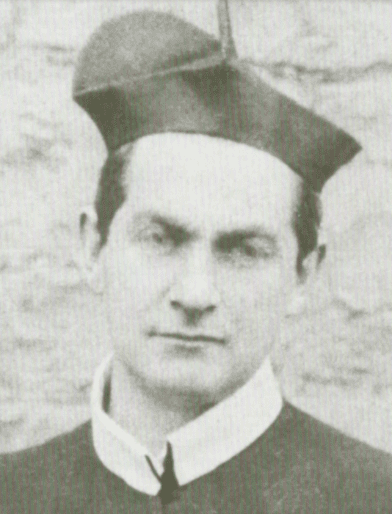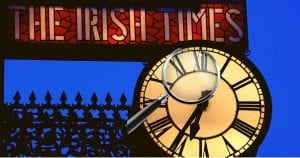The Jews who fled went on in many cases to have illustrious careers and to make major contributions to other cities and countries. What was Limerick’s loss was a gain for others.
Limerick is the fourth largest city on the Island of Ireland with a population of just under 100,000. It is known as the Treaty City having given its name to the Treaty of Limerick signed there on 3 October 1691, which ended the 1689 to 1691 Williamite Wars. The city is famous for the distinctive quality of its lace and for having one of the longest footbridges in the world. Irish Coffee was invented in Foynes, just outside the city. Also, the city is famous for its love of rugby and it was at the city’s Thomond Park stadium in 1978 that the local rugby team became the first Irish team to defeat New Zealand’s national team, the All Blacks.
One claim to notoriety
Unfortunately, Limerick has a claim to notoriety that goes along with its many claims to fame: it’s the only Irish city where a significant outbreak of antisemitic violence has ever occurred. Daniel O’Connell once claimed (possibly truthfully, when he was speaking) that “[Ireland] is the only country that I know of unsullied by any one act of persecution of the Jews” but Limerick subsequently greatly undermined that claim. The episode is often referred to as the “Limerick Boycott” or the “Limerick Pogrom”. It occurred in 1904 following a venomously anti-Jewish sermon by a Redemptorist priest, Father John Creagh in the city on January 11th of that year.
Anyone who wishes can find the wording of the sermon that Creagh gave, the terms that he used and the hate-filled stereotypes he drew on. It was published extensively in the local and national media. It’s sufficient to say that almost every trope was there, the Jews who rejected their Messiah, the Jews as Christ-killers, the Jews whose misfortune was simply divine punishment, the Jews who engage in dishonest money-lending and were over-represented in that activity.
‘The barbarous malignancy of antisemitism’
The sermon sharply divided public opinion, but only a few national leaders condemned what Creagh said. One was Michael Davitt, hero of the Land War in the 1880s and another was John Redmond, leader of the Irish Parliamentary Party. Davitt said that he protested “as an Irishman and as a Catholic against the barbarous malignancy of anti-semitism which is being introduced into Ireland under the pretended regard for the welfare of the Irish people.” “The Jews have never done any injury to Ireland.”, he added. “Like our own race, they have endured a persecution, the records of which will forever remain a reproach to the ‘Christian’ nations of Europe.” Davitt had particularly sensitivity to antisemitism; in the previous year (1903), he had written an account of the horrific persecution suffered by Jews in Kishinev, the capital of the then Russian-controlled province of Bessarabia. This city is now known as Chișinău in the independent Republic of Moldova.
John Redmond gave permission to a local rabbi to publish a letter from him insisting that he had “no sympathy what[so]ever with the attacks on the Hebrew community” of Limerick and asking that locals draw on “the good sense and spirit of toleration of the Irish people“. Meanwhile, Standish O’Grady, a major figure in the Celtic Revival movement, also condemned the events, declaring that the Irish and Jewish people should consider themselves as comrades in adversity, depicting Jews and Irish as “brothers in a common struggle“.
Violence breaks out
Meanwhile, in Limerick, the sermon provoked outbreaks of violence against the city’s Jewish community with incidents of people being pelted with mud, windows being broken and stones being thrown. The violence continued sporadically for months. What can be said with some degree of certainty is that between February and July 1904, between 40 and 50 anti-Jewish incidents were reported , a “small number” of which caused some degree of “bodily harm“. Of course, there may have been other incidents that were not reported. It should also be noted that some of these incidents involved up to 200 people.
In one incident, a 15-year old boy was arrested and found guilty for throwing a stone at a rabbi, striking him on the ankle. He was imprisoned in Mountjoy Prison for one month. On release, he returned home to a welcoming crowd who insisted that the teenager was innocent and that in any case, the sentence was too harsh.
Creagh backs down, then doubles down
A week after his first sermon, Creagh gave another sermon angrily rejecting claims that what he said was antisemitic. He insisted that he condemned the violence but then – bizarrely – launched into another anti-Jewish tirade, declaring that Jews were the enemies of Christians and were working with French freemasons to persecute Catholics. In what was to prove to be a crucial development, he called for a boycott of Jewish-owned businesses.


As a result of the boycott, many Jewish families were forced into poverty and several dozen people (from a tiny community of about 150 people) had to leave their city, seeking less hostile environments in Cork, Dublin and even Britain and South Africa. Gerald Goldberg – whose father was forced to leave – became Lord Mayor of Cork in 1977. David and Louis Marcus, whose grandparents were victims of the boycott, became very influential figures in Irish literature and Irish film. Henry Jaffé – another person who had to leave – was the grandfather of British journalist and historian Simon Sebag Montefiore. Thus, Limerick’s loss turned out to be a gain for other cities.
Not all of Limerick’s Jews left. There were still 122 people of the Jewish faith living in the city according to the 1911 census. However, that was a major reduction from the 149 who were there in 1901, especially when one takes into account that the community would – in better circumstances – have undergone a natural increase.
The Limerick Leader disgraces itself
To its shame, the main local newspaper (The Limerick Leader) supported the boycott. “Ireland is, at present, being drained of its Gaelic population by emigration”, thundered one editorial “and Jewish colonists are trooping in to fill up the places of emigrants, and to turn Ireland into a filthy Ghetto.” Reports of events at the time suggest that the local Protestant community was more sympathetic to the plight of Limerick’s Jews and its bishop did condemn the events.
The Catholic bishop did also denounce the anti-Jewish violence and made sure that his denunciation was read out in all churches of the diocese but this apparently had little effect on Creagh who, being a Redemptorist, was subject to the superiors of his own order and not to the local bishop. Eventually, they took action stating that “religious persecution had no place in Ireland” and moved him to Belfast where he spent a short time before being sent to work as a missionary in the Philippines. Reports from there say that Creagh had a nervous breakdown in 1906. He spent the rest of his life in Australia and New Zealand and died in Wellington in 1947.
The imperial authorities in Dublin seemed to take Creagh’s side in the controversy with the deputy-inspector general in Dublin Castle (one Heffernan Considine) saying that “the methods of business practised by the Jews are entirely responsible for the agitation”. Creagh had claimed in his first sermon that Limerick city’s small debts court had become “a special court for the whole benefit of the Jews”.
Truth versus lies
Voices in Limerick expressing sympathy for the Jewish community were few at the time. However, many witnesses later attested that they thought the credit terms offered by Jewish business people were reasonable but that they were forced into collaborating with the boycott by their neighbours and by the sense of divine authority being given by Creagh. Some ordinary people did continue to support Jewish businesses but not enough to ensure the survival of many – whether they were engaged in lending or not.
A Minister of God? Or something else?
As in so many situations of injustice, many people who stand on the side of truth and justice find it easier to express their outrage quietly or anonymously. In the archives of the Redemptorist Order, there is one particularly strongly worded letter sent at the time to Creagh by a resident of the village of Galbally in south Limerick. Considering the norms of the time, where Catholics were expected to address “men of the cloth” with the utmost respect bordering on fear, the letter was couched in extraordinarily forceful terms.
“So you low cur – had you nothing better to tell your people than to set them on the poor unfortunate Jews? You call yourself a Minister of God. You are a minister of the Devil. You are a disgrace to the Catholic religion, you brute.“
By Ciarán Ó Raghallaigh
Useful sources:
1. “Pogrom: Limerick 1904” (Magill magazine website).
2. “The Limerick pogrom, 1904” (History Ireland website).
3. “John Redmond: The National Leader” by Dermot Meleady (Merrion Press, 2013)
4. “Revisiting the ‘Limerick Pogrom’ of 1904” (The Irish Story website).
5. “98 years ago: The Limerick Pogrom” (The Irish Echo website)
6. “The deeds and the documents” (Irish Times, Sat, Mar 5, 2005)




